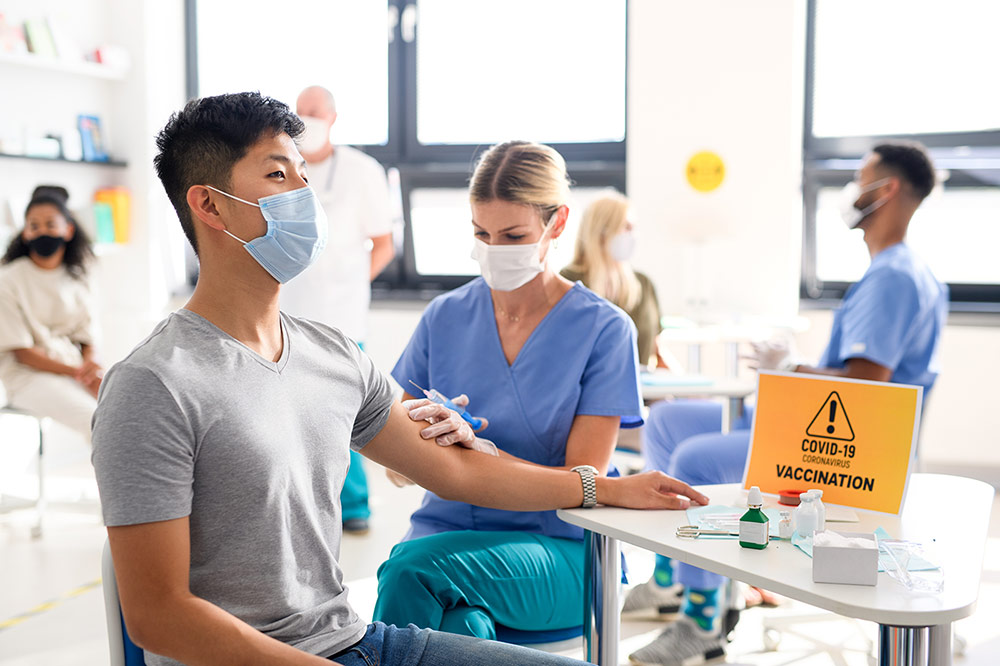
Filling the Training Gap in a COVID World: Why Experts Believe Virtual Learning and Simulation are Here to Stay
The COVID-19 pandemic has changed how we train workers in this country and is continuing to do so. As the new Omicron variant indiscriminately clamps down on the human race, EMS practitioners are again finding themselves in an unwelcoming, familiar predicament.
“Starting in the fall semester of 2021, people came back to the classroom again and everything was kind of hunky dory, and here we are with a whole new situation where people can’t come into the classroom again,” says Tom Cox, a former paramedic and training director who is now the Director of EMS sales for VRpatients. “If you don’t have an option to teach and learn remotely, things start to fall apart again.”
Even as training is changing yet again, the need for new and skilled EMS workers has not diminished.
VRpatients provides a high-quality remote learning option for real life training without real life consequences.
In before COVID times, much of the training for EMS workers was in the classroom and skills labs. Once the pandemic hit and training centers had to suddenly shut down, the scramble began to find other options, since the training can’t stop just because students can’t be in a classroom.
“VRpatients has the capability to do virtual reality training just about anywhere,” Cox says. “The pandemic has created a situation where people need to perform skills in an environment other than reality, so reality stays safe. I think virtual reality training is filling a gap between learning tactical skills and being a fully-functioning EMS professional.”
With the availability of new consumer virtual reality headsets like the Oculus Quest 2, which sells for about $300, any computer can turn into a potential virtual reality training area.
“At that price point, you can not only work online on a computer, but you can actually run the cases in full VR in your own home because there isn’t the overwhelming cost anymore,” Cox explains. “Students don’t have to come into a classroom to put on a pricey VR set anymore.”
The headsets are the same ones used for gaming and other applications, so an investment in a headset is not just for a single use. While there are other VR headsets on the market that are compatible with VRpatients, the Quest 2 seems to be the one most people will recognize. (Contact us for a complete list of headsets that are compatible.)
Cox says he thinks the new training methods using virtual reality are here to stay.
“EMS students who are getting ready to graduate used to go into hospitals and do clinicals and ride along with crews to get experience with live patients, but those opportunities are tough to find. So how do you get experience and encounter an unlimited number of patients with varying afflictions? Simulation and VR.”
Both simulation and virtual reality will play key roles in training, but will never fully replace in-person training.
“This kind of program does not take the place of basic education. Someone needs to teach you how to start an IV. Someone needs to teach you how to put on a splint. At the end of the day, the question is, can you take the knowledge and skills and put them all together and react to a patient? That’s what VRpatients is about. It’s not about teaching you how to do something, it’s assessing if you know what to do and when to do it.”
Cox says even the National Registry of Emergency Medical Technicians is changing how they test, allowing more virtual options and focusing on critical thinking skills.
“Everything that you read is saying education is moving to a more virtual and augmented reality orientation,” he says. “If you can practice something enough times to where you can get it right more times than get it wrong, doesn’t that prepare you better for when you actually go and do the job? I suggest the answer is yes.”
VR is helping to fill that experience gap.
“If you can’t practice on a live patient, VRpatients is the next best thing, a patient that acts live and gives you a chance to critically think through skills that come first, second, and third,” Cox explains. “You can practice a case dozens of times until you get it right and you can be scored on it so you can tell the difference in what you’re doing.”
He compares the VRpatients technology to that of flight simulators.
“How do pilots maintain their flight rating status when they don’t get the hours they need in a cockpit? They do it in a simulator. They practice their skills and they learn in the simulator and it’s a big part of getting certified. For EMS, you can prepare safely and inexpensively with VRpatients. It’s the light at the end of the tunnel for trying to develop skills when you can’t develop them in the real world.”
